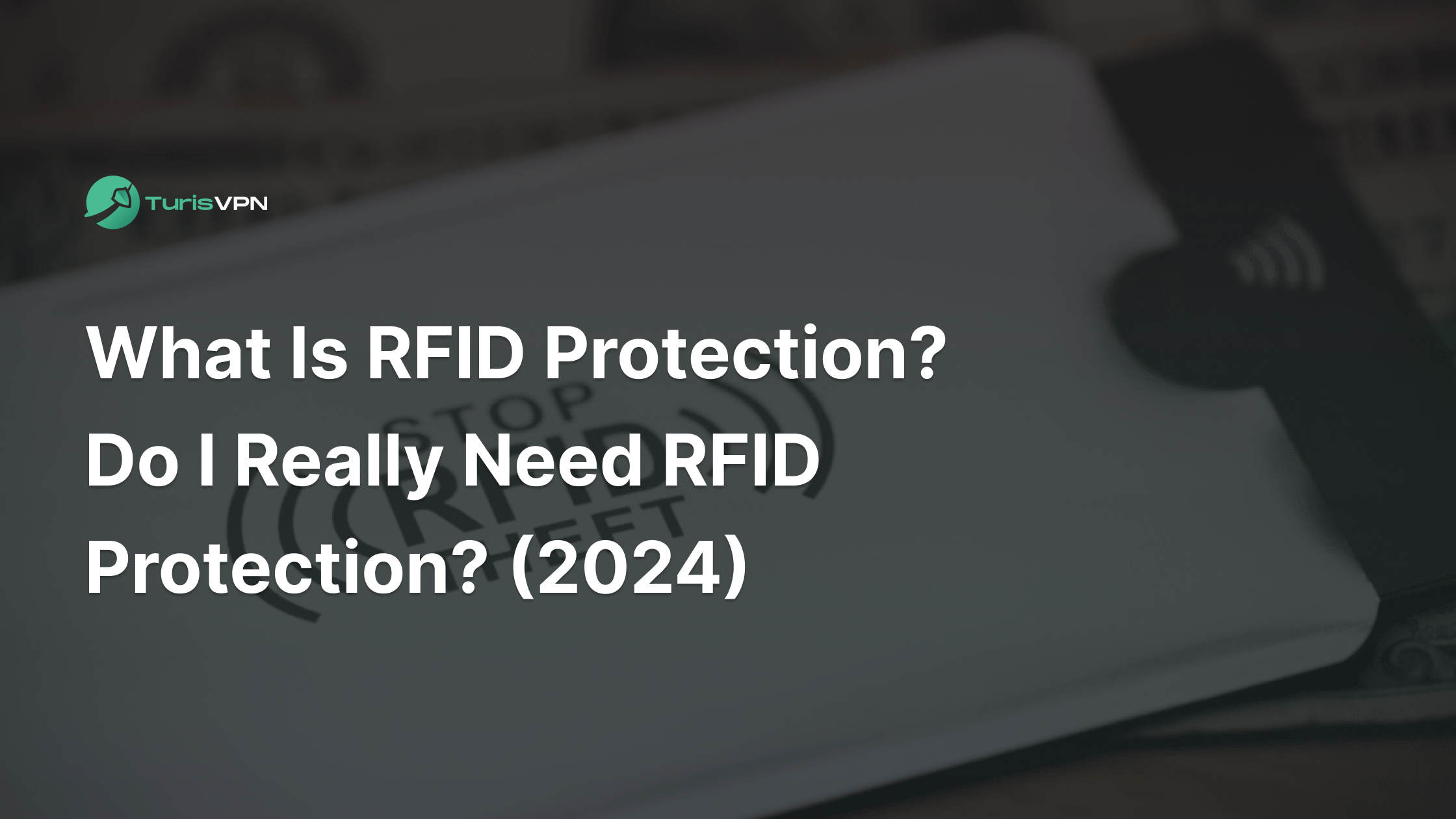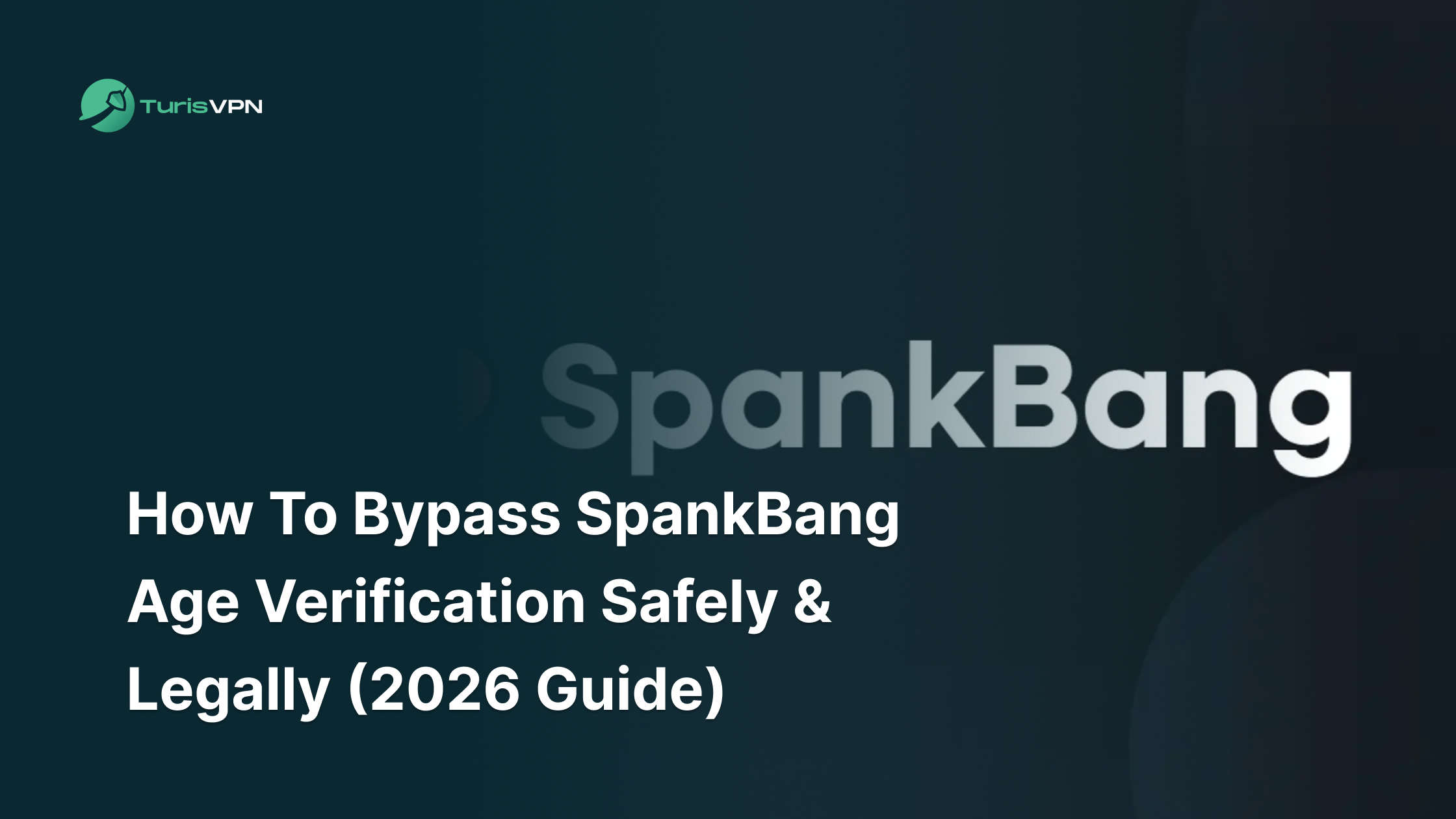You’re walking through a busy mall or commuting on public transport, unaware that someone nearby could be quietly stealing your credit card information. This isn’t some science fiction —RFID skimming is a real issue in 2024.
In this article, we’ll explain what RFID protection is and whether you need it to protect your personal information. We’ll cover how RFID skimming works, the risks it presents, and whether investing in RFID-blocking products is worth it.
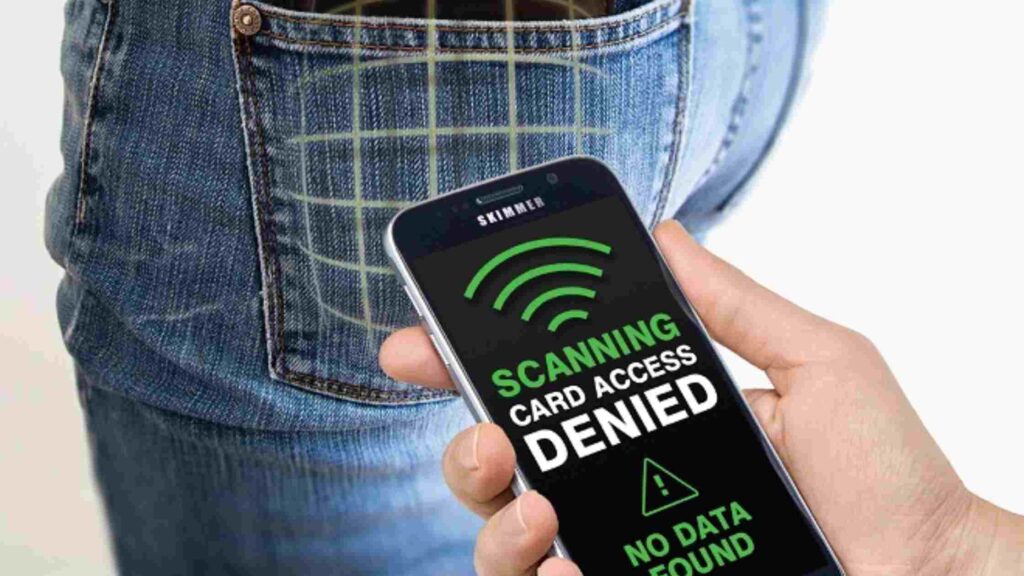
Key Takeaways:
- RFID chips are now embedded in many everyday items like credit cards, passports, and even driver’s licenses, making contactless transactions and identification quick and convenient
- Modern passports and RFID-enabled credit cards often come with encryption or shielding layers, reducing the need for additional RFID-blocking products.
- Most modern RFID-enabled cards come with security measures such as encrypted one-time-use transaction codes
What is RFID? How Does RFID Work?
RFID (Radio Frequency Identification) is a technology that uses radio waves to identify and track objects, animals, or even people.
It consists of two main components: RFID tags (also called smart labels) and RFID readers. The tags contain a microchip and an antenna, while the readers emit radio waves that activate the tag and capture the stored data. The information collected can range from basic identification numbers to more detailed data depending on the application.
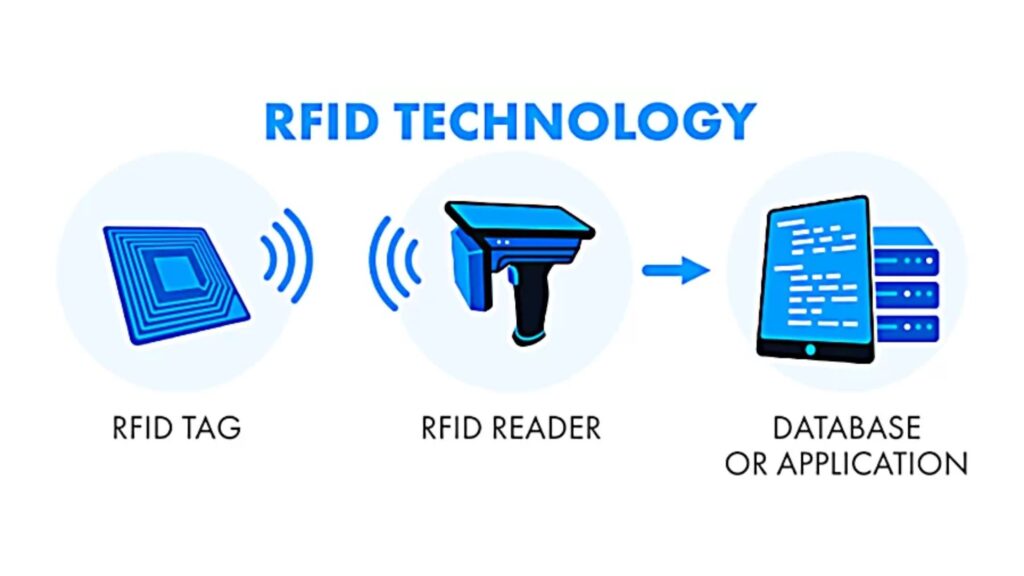
There are two types of RFID tags: passive and active.
- Passive tags, which are more common, don’t have their own power source. They rely on the radio waves from the reader to power up and transmit data. These tags are typically used for everyday items like inventory tracking, library books, or even in credit cards.
- Active RFID tags, on the other hand, have their own power source (like a battery), allowing them to transmit data over longer distances (sometimes up to 100 meters), making them ideal for tracking more valuable assets.
RFID technology is widely used across industries, its ability to capture data without needing direct line of sight (unlike barcodes) gives it a significant advantage in many applications. However, the technology has sparked privacy concerns due to its potential for unauthorized data capture, as RFID signals can sometimes be read over long distances.
Pros and Cons of RFID
Pros of RFID
- Speed and Efficiency: One of RFID’s biggest advantages, this allows multiple items to be scanned simultaneously.
- Increased Range : RFID tags can be read from long distances, sometimes up to 100 meters,such as warehouses or retail stores
- Improved Data Security: Unlike barcodes that display data visibly, RFID stores information electronically, making it harder for unauthorized individuals to access the data.
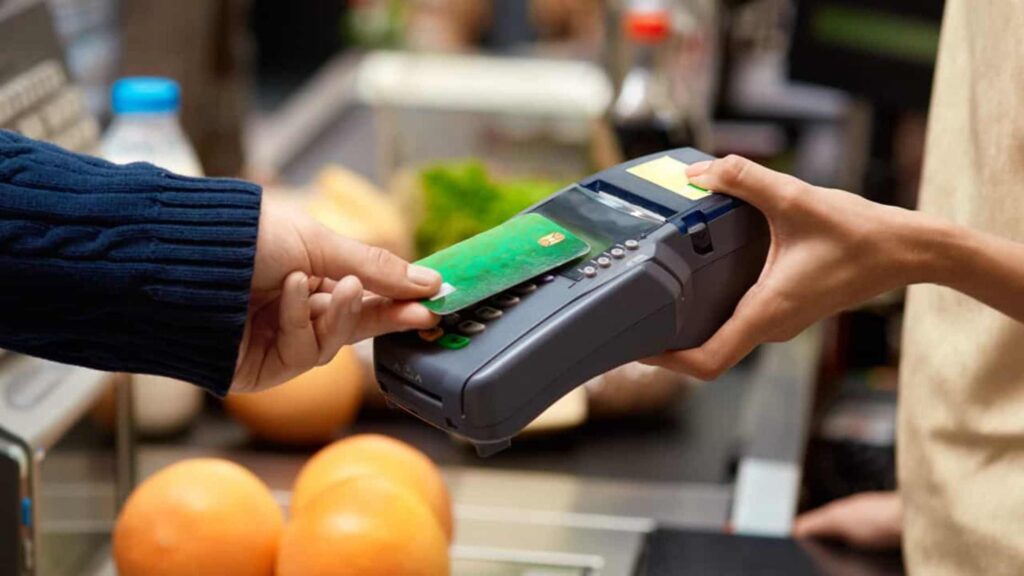
Cons of RFID
- High Implementation Costs: RFID systems, while cost-effective in the long run, have high upfront costs. The price for RFID tags can range from $0.25 to $5.
- Privacy Concerns: Since RFID tags can be scanned remotely, they raise privacy concerns, particularly when used in consumer products.
- Interference Issues: RFID signals can be disrupted by certain materials, such as metal and liquids, which can interfere with the reader’s ability to scan the tag accurately.
What Are RFID Blocking Wallets?
RFID protection is a method used to safeguard personal information stored on RFID-enabled items like credit cards, passports, or ID badges from unauthorized scans.
These protective items are designed with materials like aluminum or carbon fiber that can block radio waves, ensuring that your RFID-enabled cards or documents cannot be scanned without your permission.
Criminals equipped with RFID scanners can potentially intercept these signals and steal sensitive data from cards that contain RFID chips. This process, often referred to as “skimming”, allows thieves to extract important data like credit card numbers, potentially leading to identity theft or fraud.
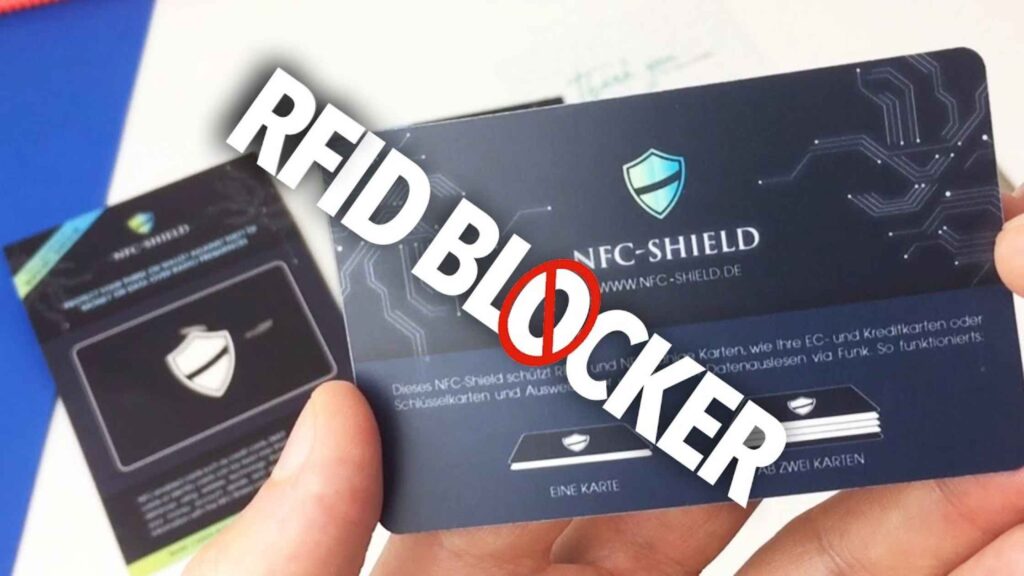
While RFID blocking protects physical cards, online security requires different tools. Using secure and efficient VPN protocols, such as WireGuard, helps protect against cyber threats. Learn more about the benefits of using WireGuard in this informative article on VPNs.
With RFID technology being increasingly used in everyday items, such as credit cards and e-passports, the demand for RFID protection has grown significantly, and the global RFID market is expected to reach $16.23 billion by 2029.
What Makes A Wallet RFID Blocking?
An RFID blocking wallet is specially designed to protect your cards with embedded RFID chips from unauthorized scanning. But what exactly makes a wallet “RFID blocking”?
The technology works by either reflecting the signal or absorbing it in such a way that it does not reach the RFID chip inside the card. Common materials include aluminum, copper, or stainless steel, all of which are excellent at blocking RFID signals.
As consumer demand grew, brands began to innovate, creating wallets that were not only RFID blocking but also stylish. You can find them in various materials like leather, metal, or synthetic fabrics, with designs that cater to both men and women.
Some of the most popular brands known for their RFID blocking wallets include Bellroy, Secrid, Ridge Wallet, and Herschel. Personally, I find Ridge Wallet‘s metal designs to be a great choice, as they offer durability along with RFID protection in a sleek, modern package. Minimalist cardholders and passport wallets are highly favored by travelers and professionals who want to keep things simple and organized while ensuring their information is safe.
Is RFID Wallet Protection Necessary?
While RFID skimming sounds like a significant threat, the reality is that it’s quite rare, so RFID protection is optional rather than necessary.
Studies show that most “contactless thefts” happen because a physical card was stolen, not because of RFID hacking.
Though the risk of RFID skimming is low, some people may still want peace of mind. Especially if they frequently travel in crowded areas like airports or public transportation hubs. Moreover, most RFID-enabled credit cards with security features like one-time transaction codes, which add layers of protection even if your card is scanned.
Additionally, passports and Global Entry cards issued after 2007 already come with built-in RFID shielding in their covers, so you may not need an additional layer of protection for those documents.
Is RFID Theft a Real Thing?
It’s a real method where thieves can use handheld RFID scanners to steal sensitive information, such as credit card details, without physical contact. In 2022, the global cost of card fraud reached $32 billion, much of which is attributed to data breaches and wireless skimming.
RFID protection isn’t the only method to keep your sensitive data secure. Just like protecting your physical cards, securing your digital wallet is crucial, especially in Web3 environments. Learn more about safeguarding your assets using VPNs in this complete guide to securing your Web3 digital wallet with a VPN.
How Can I Tell If My Wallet Is RFID Protected?
To tell if your wallet is RFID-protected, here are a few things you can check:
- Labeling: Many RFID-blocking wallets will have a label or tag indicating they provide RFID protection.
- Material: RFID-blocking wallets typically have a layer of material that blocks radio frequencies, often made from metals like aluminum or carbon fiber.
- Product Description: Review the product description or packaging for information that confirms RFID protection.
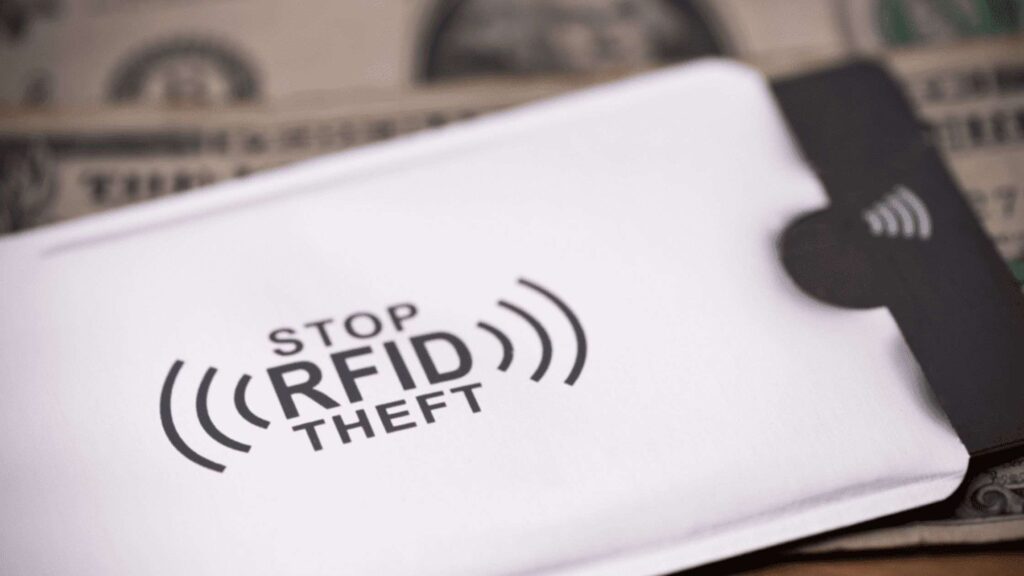
You can also use an RFID scanner or app to see if it can detect your cards through the wallet. If the terminal can’t read the card, your wallet likely has RFID protection.
Beyond RFID, implementing network access control is vital for securing your digital footprint and ensuring only authorized devices can connect. Learn how NAC can enhance security in this detailed guide.
How To Protect Credit Cards In Wallets?
Let’s explore the most effective ways to keep your cards secure and your financial data safe.
1. Limit the Cards You Carry
Another simple yet effective strategy is to limit the number of cards you carry daily. By keeping only the essentials in your wallet, you reduce the risk of losing multiple cards if your wallet is stolen.
For even more security, you can digitally store your cards in secure payment apps like Apple Pay, Google Pay, or Samsung Pay. These apps not only reduce the number of physical cards you need to carry but also offer enhanced security by tokenizing your card information.
2. Use RFID Blocking Wallets
One of the most effective ways to protect against RFID skimming is to use an RFID-blocking wallet. These wallets are designed with layers of materials like aluminum, stainless steel, preventing any unauthorized access to the data stored on your card’s RFID chip.
According to security experts, while the risk of RFID skimming may be low, having an RFID-blocking wallet adds an extra layer of protection, especially for those who travel frequently or spend time in crowded areas where criminals may be lurking with scanners.
3. Protect Your Card Numbers
Always be mindful of where and how you expose your card numbers. When taking out a card to make a payment, try to keep the number covered, and never allow anyone to take your card out of sight. Never share sensitive card information like your card expiration date or CVV/CVC code with anyone.
Conclusion
While RFID skimming is a relatively low-risk crime, it’s still a potential danger in today’s digital age, especially as more devices and cards become equipped with RFID technology.
To protect yourself, especially when traveling or in crowded areas, investing in RFID-blocking products can add an extra layer of defense.
FAQs
Q1. Do I need RFID protection for my passport?
Most modern passports, especially those issued after 2007, already come with RFID protection in the form of a shielding layer embedded in the cover. This means that additional RFID protection isn’t necessary for most people.
Q2. Do credit cards with chips need RFID protection?
Credit cards with EMV chips don’t necessarily need RFID protection. These chips don’t transmit radio signals and require physical contact with a payment terminal to function.
Q3. What material can block RFID?
Materials like aluminum, carbon fiber, and other metals can block RFID signals by creating a barrier that interferes with the radio waves used for scanning.
